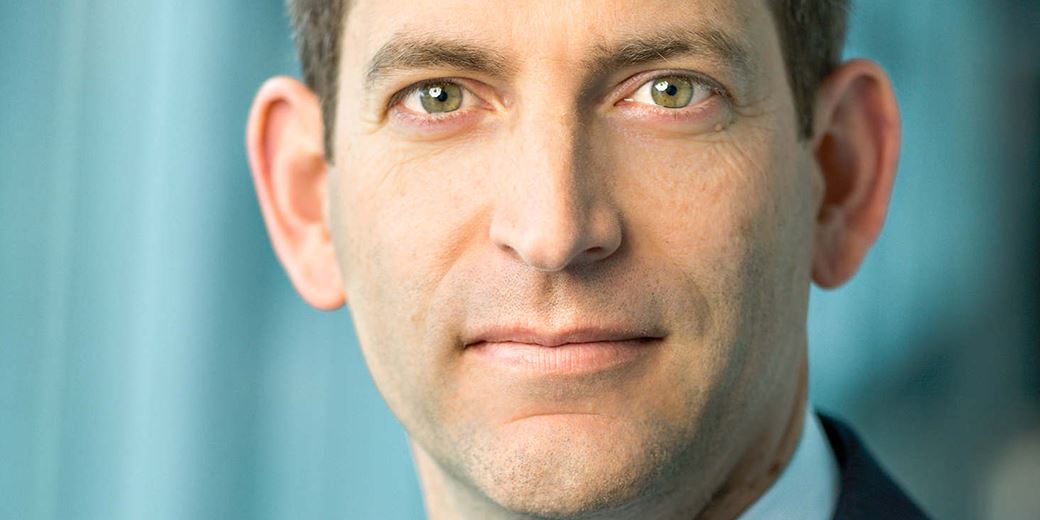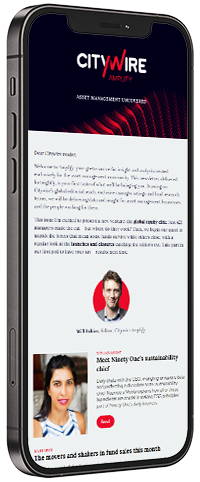There might be light at the end of the tunnel, but it ain’t here yet.
Alts Insider: How Schroders Capital acquired big-hitter status

Latest Newsletter
Value stance rewards managers with first AAA rating
The year comes to a close with a host of managers gaining their AAA wings.
Real Life: A cheaper, smarter way to fly business to the US
Companies are clamping down on travel costs. Here’s how to travel in comfort while keeping the expenses department happy.
Community
In the wake of a Citywire study into how the world’s largest asset managers are expanding their alternative investments, Amplify will explore several of the firms featured as part of a recurring feature. In this first entry in the Alts Insider series, Citywire’s alternatives correspondent Selin Bucak speaks to Schroders Capital.
You have to kiss a lot of frogs before you find the prince. It’s an apt way to describe Georg Wunderlin’s experience of building out Schroders Capital and finding the right people to help him create a new division for the asset manager.
According to its global head of private assets, the biggest challenge in creating the one-year-old division was getting the right teams on board.
‘We spent a lot of time looking at every opportunity in the market and often came to the conclusion that the cultural fit wasn’t there,’ he said. ‘Or in some cases, the acquisition wouldn’t make sense from a pure valuation point of view, or it was either too small or too big. Many things have to fit. You need to have a shared vision with these teams.’
How to make acquisitions work
Before Wunderlin (pictured) joined Schroders in 2019, the asset manager had a footprint in private markets through its existing – but small – real estate business and the acquisitions of Brookfield’s securitised credit team in 2016 and private equity firm Adveq in 2017.
But Peter Harrison, who became CEO in 2015, wanted to build a global private-market business across the four main asset classes – private equity, private debt, real estate and infrastructure –and recruited Wunderlin to do just that.
It aims to have 25% of the revenues of Schroders generated from private assets, which are currently around 12%.
Wunderlin knew he had to focus on both organic development and inorganic growth, ‘recognising that we were late starters’. Since 2019, the firm has made several more acquisitions, including impact investor BlueOrchard, Dutch real estate manager Cairn Real Estate, and renewable energy-focused firm Greencoat Capital.
It has also been active in hiring senior managers, including Natalie Howard as head of real estate debt, Chantale Pelletier as global head of infrastructure and Sophie van Oosterom as global head of real estate.
Once the proposition had enough scale, Schroders Capital was born in June 2021. It now has £88bn in assets under management.
Its acquisitions have succeeded because each added a new capability to the business and did not overlap with existing teams. ‘Each business coming in has a clear role to play and a huge space to cover, which we can add to and expand. Every acquisition has been done from the perspective of growing, not merging or eliminating positions,’ he said.
In addition, being part of a new business and helping to build it up was attractive to more entrepreneurial people, Wunderlin said.
Schroders did not push the acquired firms into the background – it leveraged their respective expertise across the group. For example, the co-CEO of BlueOrchard, Maria Teresa Zappia, has become head of sustainability and impact for Schroders Capital.
‘Each partnership remains intact in identity, but part of a bigger family, which is different from a strict top-down integration approach, where you risk frustrating dynamic people,’ Wunderlin explained.
Now that Schroders Capital has propositions established in all four main asset classes, inorganic growth will play a lesser role, although Wunderlin said they are still opportunistically looking at everything the market does and may take steps to accelerate geographic expansion.
Winning mandates and launching funds
Schroders Capital has split its offering down the middle, half in mandates and half in products, such as funds.
The mandates give the firm the ability to create an investment portfolio by working with the investors and considering their specific needs. It is a more tailored approach, which has so far worked well for the business, winning it several high-profile mandates. These include pension fund Nest’s private equity allocation, which could be worth up to £1.5bn; Greater Manchester pension fund’s £700m UK portfolio; and German insurer Barmenia’s €100m private assets impact mandate.
The firm has also been successful on the funds side, generating £7.4bn of net new business during 2021.
When creating a fund, it’s important to differentiate between institutional and private-client strategies. Wunderlin said the biggest challenge for Schroders Capital is the sheer number of jurisdictions it has to deal with.
The institutional fund market is fairly mature, with the classic limited partner/general partner structure typically taking three months to create, which includes the time needed to get regulatory approval. But where innovation is happening – on the private-client side – things are more complicated.
‘A lot of effort has gone into creating structures that are accessible for broader audiences. We’ve created semi-liquid funds, listed trusts, feeder funds,’ Wunderlin said.
Schroders Capital has funds in the pipeline that use new structures, such as the European long-term investment fund and the UK’s long-term asset fund, to allow it to ‘deliver private markets in smaller bite sizes’.
Such structures can take between six and 12 months to get going, Wunderlin said. It begins with purely operational matters, such as how to take on clients, the valuation of the fund, and how the liquidity will be structured if it’s a semi-liquid fund. ‘The entire operational value chain of fund administration needs to be designed,’ he added.
Dialogue with the regulator is also more extensive and there is a more back-and-forth conversation if any adjustments are needed. Schroders Capital has an in-house structuring hub, where lawyers and project managers work with the solutions team to create funds. It also brings in an external law firm for almost every fund.
Key to success
Schroders Capital has around 35 investment strategies, making it broadly diversified. It also has a diversified investor base, including both institutional and private client money through intermediaries.
‘We feel that if you look at current markets and the environment in the next couple of years, it will be key to be diversified in both the investment market and the fundraising market,’ Wunderlin said. ‘You have to be able to pivot between asset classes that are becoming more or less attractive and tap into shifting fundraising sources as well.’
Latest Newsletter
Amplify Issue 30: The fund groups topping the tree
We analyse which groups have had the biggest inflows and outflows in 2022, look at managers achieving their first AAA ratings, and hear from Rob Kyprianou on why regulation gets it back to front.
Amplify Issue 29: Red hot: 2022’s private market hiring spree
2022 has been a hot year for private markets, but are asset managers putting the brakes on their expansion efforts? Plus, we look at how the bear market has affected launches this year and look at how firms can better communicate their brand values.
Amplify Issue 28: Fill your ESG product gaps
We hear from fund buyers on what they’re looking for from an ESG fund, find out what Neuberger Berman is plotting in the alts world, and learn the winners of Citywire’s Gender Diversity Awards.
Community
